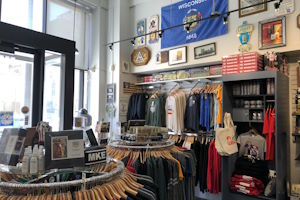2008
Stars and Stripes Forever
My kids are growing up, and as they get older, I believe it’s increasingly important to educate them about their duties as citizens. I worry about the ignorance of Americans of their own history, from the framing of the Constitution to why we go to war with other nations. In anticipation of Independence Day, I sat down with my kids to see what they already knew and what was left to teach. I taped it all and some of it is below. As always, they amazed me with their honesty and their interest in the world around them. Try it with your own kids soon. You’ll probably be amazed, too. ON FLAGS: LENA: You have to stand up for the color guard. ME: Why? L: You have to honor them, the soldiers that fought for us. EMMA: They already honored us by fighting, and we have to honor them back. It’s a circle. ME: What else do you know about honoring the flag? L: It can’t ever touch the ground! ME: Right. It’s considered disrespectful. L: When Grandpa Allen died, they had a flag over his coffin. E: Then they folded up and gave it to Grandma Margaret. ME: What else do you know about flags? L: Ooh! I know! If it’s raining out, you take it down. E: And you take it down at night. JEFFREY: Why at night does it have to come down? L: So no one steals it! ME: No. Flag etiquette says it should only fly during daylight. So, do you guys know what happens when someone important dies? ALL KIDS: -blank stares- ME: They fly the flag at half-mast. That means only part-way up the flag pole. It’s a sign of respect for the person who died. L: If I was important and I died, I would want the flag to fly way up there for me! I would want a second flagpole stacked on top and then someone to sit up there and keep that flag safe! VOTING: J: I like going with you to vote. ME: Why? J: You like to vote. And I like it when you’re happy. E: I like going with you because it’s pretty amazing to see all of the people who just come to our school to vote. It makes me feel so proud to see everyone out voting. CIVIL DISOBEDIENCE: L: What’s it called when people are upset with the government and they show up in a group so the government knows? E: Protesting. ME: Yep. Sometimes it’s called demonstrating or marching. L: We don’t always march. You could hold a big sign that says what you believe, or make up a chant and chant it really loud. ME: That’s your responsibility as a citizen of this country. You need to tell the government in peaceful ways when you don’t agree with them. People don’t have this right in every country. THE PLEDGE OF ALLEGIANCE: ME: When you started fourth grade, you wanted to know what […]
Jul 1st, 2008 by Lucky TomaszekRed, White & Bleu
The French celebrate their independence in July, just like us – on the 14th, the anniversary of the day the peasants stormed the Bastille and raided its cache of weapons. Their banner, like ours, is red, white and blue, colors that stand for liberty, equality, and fraternity, the ideals of the French Revolution. Taste Chef Frakes’ tribute to both cultures at his demonstration at Bastille Days on Saturday, July 12 at 2 pm. VS WHITE DONUT PEACH BEIGNETS, RED BEAUJOLAIS SYRUP & BLUEBERRY SMASH The Pfister Hotel 424 E. Wisconsin Ave., Milwaukee 414-273-8222 Brian Frakes, a Brookfield native, moved to West Palm Beach at the age of twelve. He majored in Psychology at Florida State University while launching what would be a distinguished career in hospitality as a dishwasher. Once finding his true calling, Frakes learned to cook under talented chefs in Florida and Los Angeles. It was The Pfister Hotel, and the fact that his family had moved back to Milwaukee, that drew him home again. “I was always proud of where I came from and The Pfister is clearly Milwaukee’s flagship property. It’s one of only 400 rated as a ‘Preferred Hotel’ in the world,” he says. Here’s a red, white and “bleu” play on the classic beignet. Stone fruits are back in season and donut peaches are among the best. Whip up this simple fritter batter the day before and have fresh donuts in the morning with your coffee! For donut peach beignets 2 c flour 2 T sugar 2 t baking powder ½ t salt 2 T powdered milk 1 t cinnamon 2 eggs each ½ c water 2 c roasted donut peaches, diced 2 T corn oil 2 T powered sugar Combine all dry ingredients, then add wet ingredients in a mixer and blend. Do not overwhip. Chill in refrigerator for at least an hour. Deep fry generous spoonfuls of dough in hot oil until golden brown (about 4 minutes). Sprinkle with powdered sugar. Red Beaujolais Syrup 1 c Beaujolais Nouveau ½ c white balsamic vinegar 2 T brown sugar ¼ vanilla bean Combine ingredients in a saucepan and heat until reduced by 2/3. Set aside to cool. Drizzle sauces over beignets and enjoy! Blueberry Smash 1 c blackberries 1 c blueberries 1/3 c sugar 3 T Grand Marnier Combine blackberries & blueberries with sugar in a sauté pan and heat on medium heat until sugar caramelizes. Drizzle in Grand Marinier and set aside to cool. GOUGERES (CHEESE PUFFS) Geneviève Leplae came to America from Vesoul, a small town east of Dijon. Now retired from teaching French at Berlitz and the Alliance Francaise, she recalls her heritage with this traditional Burgundian snack that can be made ahead and served later. A widow with five children, her oldest daughter, Anne Herisson-Leplae, is the Director of the Alliance Francaise of Milwaukee. 1 recipe Choux Paste: 1 c sifted all-purpose flour ½ c water ½ c milk 8 T butter, cut in small pieces ½ t salt 4 […]
Jul 1st, 2008 by Cate MillerTriptych
By Nicholas Grider Triptych sells itself as a cross-disciplinary experiment in the ways that three different media — visual arts, dance, and music — mesh and fail to mesh in a performance setting, and on those terms alone it’s a great success, despite the somewhat apologetic attitude of the piece’s creators. The result of both collaboration and independent (but side-by-side) work, Triptych presents the efforts of composer Christopher Burns, visual artist Leslie Vansen and choreographer Luc Vanier to explore how effectively their methods might be synthesized. The fact that the answer to this question is yes and no provides the audience with a rich, provocative experience of a work that already has multiple points of entry. And besides that, the work is a sheer pleasure to watch. Luc Vanier’s choreography, in particular, was a welcome shove away from traditional dance concert, with roots in the work of the Judson Dance Theater and Allan Kaprow’s early happenings (as well as a pretty direct nod to Goat Island). Vanier uses the various rooms of the performance as a means to break or ignore many of the conventions of traditional dance theatre. My favorite piece of inspired recklessness: the well-lit floor space where you expect the dancers to stay doesn’t represent any real boundaries at all, and often dancers would swing very close to the audience or move completely out of the light so matter-of-factly that the rooms themselves became sculptural spaces and light became as much of a participant as the music, choreography, or animations. (Also keep your eyes peeled for the play with gender roles in the duet in part two.) There were smaller signs of a tossed-aside rulebook, too – like the lack of presence or tension in the dancers’ arms during their more quotidian moves – but in the mashing-together of art, music, and dance, it is Vanier (and the uniformly excellent dancers) who does most of the heavy lifting. This is not to say that Burns and Vansen’s contributions aren’t just as engaging – just crowded out a little by the physical fact of bodies in motion. This is one discovery that Triptych makes, and even if it’s not new, it’s relevant: it’s awfully hard to balance very different modes of expression (as was the plan in part two of the triptych). Sometimes simply setting things alongside each other is more successful, as it was with Burns’ lead-off percussion solo in the first act (think Morton Feldman with the volume cranked) and the labyrinth of the triptych’s third part, in which Vansen’s drawings and animation appeared as projections through which dancers and audience members have to navigate, filling Vansen’s elegant abstractions with the narrative implications of both the dancers’ and spectators’ shadows. I still feel, here, as if I’m selling Triptych somewhat short, because what’s ultimately thrilling about it beyond its quality is that it’s openly and unrepentantly an experiment, a kind of willingness to raise the stakes that Milwaukee has rarely seen since Theatre X in its […]
Jun 23rd, 2008 by Vital ArchivesNow in 3D!
You might not think Hillary Clinton and Alanis Morissette have much in common, but somehow, Broadminded’s rendition of Hillary’s concession speech as the spoken lyrics of “You Oughta Know” sheds new light on the current presidential campaign season as well as the media coverage consuming it: exactly what the four women of Broadminded are aiming for in their newest multi-media sketch show, Broadminded: Now in 3-D. Each sketch targets an aspect of modern media and exposes the skewed, the superficial and the downright ridiculous. The four women of Broadminded – Stacy Babl, Anne Graff LaDisa, Melissa Kingston and Megan McGee – got together two years ago after taking classes and performing at ComedySportz. All four collaborate in the writing, direction and production of each sketch. They are ego-less in their synergy, producing light comedy with a serious underlying point, like the ultra-conservative news pundit who insists the answer to controlling illegal drugs is right there in the second amendment, or the sober BBC anchor interviewing girls she believes to be Chinese exchange students, but are really just Americans who want a few bucks on a promised prepaid Master Card. The show incorporates video sketches with the live performance, spoofing a Dateline exploration of “Prodigious Progeny.” The most notable chronicles the nurturing that goes into raising a daughter believed to be the anti-Christ. After all, the number six can look an awful lot like the letter “G” if not practiced over and over with strict parental guidance. LaDisa is eerily charming as the hoped-for anti-Christ. Broadminded: Now in 3-D is the group’s first attempt at a completely thematic show. Each sketch spins satirical on aspects of the media and entertainment, including television, radio, news and advertising. It’s smugly satisfying to see a version of those yogurt commercials in which live-culture lovers admit they’re still hungry. And who knew there’s now a prescription drug called Urbanadrene, a cure to the disease Suburbanitis? Side effects include but are not limited to eating organic produce and using public transportation. The four women don’t just throw together a few funny ideas and hope for the best: research is an integral part of their creative process. Most will recognize syndicated radio host Delilah as an effortlessly bland surgeon of the heart, patching up relationships with generic pop songs of the past two decades. But Kingston’s phenomenal interpretation of an alcohol abuser lining up shot glasses on the sound board while producers try to break into her studio is based in truth, which makes it even better. Performers in comedy sketches have just a few seconds to establish personas for the audience. Broadminded uses body language, voice and very few props to convey character immediately. All four women completely invade their roles, and each sketch is crisp and distinctive. The video sketches provide time for make-up, hair and costume changes. Some of the physical comedy occasionally slides into stereotypes that Broadminded could have avoided, but despite this, the women never rely on an article of clothing or […]
Jun 23rd, 2008 by Russ BickerstaffSummer days, summer nights with De La Buena
By Amy Elliott and Amber Herzog De La Buena is: David Wake, Cecilio Negron Jr., Andy Noble, Julio Pabon, Aaron Gardner, Eric Jacobson, Mike Pauers, Jesse Sheehan, Holly Haebig, Elladia Regina James Wake (De La Baby). Not pictured: Jeremy Kuzniar, Jamie Breiwick. Ready for festival season? We sure are, especially because it inevitably means the return of De La Buena, one of Milwaukee’s most distinctive party bands. We sat down with band leader David Wake waaaaay back in February after they played a smashing set at the City of Milwaukee Birthday Party. We thought you might like to hear more about them now, though, since it’s sunny, hot, and everyone’s ready to salsa. Viva De La Buena! And read on … Ed. Describe the sound of De La Buena. In simple terms, De La Buena is a sophisticated dance band. First and foremost, we’re a Latin Jazz band, but we are no doubt influenced by the traditions of Salsa and Samba infused by the great bands of the 1960s and ’70s coming out of New York, Puerto Rico, Brazil and Cuba. We have a big sound that includes a four-to-five-piece horn section, Hammond organ, bass, and three percussionists (one of which is a kit drummer). The instrumentation we employ stretches beyond tradition and allows us the freedom to step into other realms of musical and artistic expression. Obviously, De La Buena is a large band full of musicians from eclectic backgrounds. Where do they come from, how did they come to De La Buena, and what do they bring the project? The band shares a very strong family bond and we’re family people who take their art and their craft seriously. Most of us inherited a deeply rooted love of Latin music from our families, and have the ability to stay true to that history and those traditions without becoming predictable. We love to have fun and make music, but we also want to put out music that has integrity and taste. What’s the appeal of the music you play – for you and for your fans? We bring something for both body and mind. People come to the shows to listen, and people come to the shows to dance. Folks really seem to love a big band with a big sound and they know that when they come to a De La Buena show, it will be a culturally diverse scene, especially in a town so infamous for its segregation. For the band, our appeal lies somewhere between tradition and innovation. We learn about and share the history of Latin music, but always leave room for innovation and new ideas. How has the band grown and changed over the past five years? We started as a trio. Adding a drummer, a tenor saxophonist, and a trumpet was another, more improvisational phase of the band—a period of discovery. Our songs consisted of much less organized ideas and grooves that we would use as launch pads for improvisational explorations. Our album, […]
Jun 16th, 2008 by Amy ElliottBorn to be free
Free the Galazan 5! Inova/Kenilworth June 13 – July 27 Opening reception: Friday, June 13, 6 – 9pm Gene Galazan left Milwaukee years ago and fled to Arizona. I remember him from the way back days when he and his artist spouse were active participants in Milwaukee art events, so I was intrigued to learn that Inova/Kenilworth will be exhibiting five of his Cor-ten steel sculptures in an exhibit titled Free the Galazan 5! (June 13 – July 27). I found images of the 5! online at the antique and art site of Gary Gresl, who owns the sculptures and is offering them for sale. The spin surrounding the exhibit is pinned to the “story” behind the sculptures: that they were left to languish in a warehouse when deemed to be too “dangerous” and too “abstract” for public consumption. The sculptures, fabricated in 1980 for CETA, a federally funded jobs program, were shot out of the saddle. Here’s an excerpt from an article written by Dean Jensen (yes, that Dean Jensen), in the Milwaukee Sentinel March 2, 1982: “The pieces, fabricated from Cor-ten steel and weighing 200 to 250 lbs. each….are gathering dust in storerooms in the old Town of Lake water tower on S. 6th St., and in a Public Works Department structure in the Menomonee Valley.” The article goes on to note that Galazan was planning a demonstration outside of City Hall, “seeking to free the sculptures he claimed were being held by the city.” A friend of mine who attended UW-Milwaukee recalls Galazan’s parents as being “civic-minded trendy art junkies with a big house on Lake Drive.” They were active in Jewish Vocational Services (his mom ran the JVS pottery department) and were as “sweet as can be,” or so remembers my friend. Of course, most artists have tales to tell, particularly those with bones to pick, and Galazan was (like other artists of his era) highly theatrical. That said, Inova/Kenilworth decided these sculptures and their colorful history would be useful in enlightening viewers about the problems of making art for the “public.” A good example of things gone awry is the current flap surrounding the proposed sculpture memorializing the sinking of the Lady Elgin. Most people involved in the arts will also recall when Dennis Oppenheim’s proposal for the Blue Shirt sculpture was hung out to dry. However, the basic question remains: are these five sculptures worth the effort of pondering, let alone building an exhibit around? Inova curator, Nick Frank, first saw the Galazan 5 during a visit to Gresl’s home, where they sat among weeds and high grasses. He listened to the back story and decided to have all five hauled by truck and placed in Inova/Kenilworth’s vast gallery space. The largest sculpture is priced at $2,000. You can view it and the others at www.greslartmarket.com. It’s a shame that the five are being sold separately. They clearly belong together. Prior to writing this and visiting the gallery, I went online to see what […]
Jun 12th, 2008 by Stella CretekThe Girl in the Frame
What would life be like with the perfect partner, romance, or relationship? Exploring all these possibilities, Jeremy Desmon’s 2003 play The Girl in the Frame closes In Tandem Theatre’s season. This tribute to the romantic ideal focuses on the seldom-realized fatal discrepancies to these overrated dreams. The Girl in the Frame intersperses musical numbers throughout the two acts while centering on the faltering relationship between Alex and Laney, two 30-somethings who have been engaged for four long years. Alex, who seemingly unemployed waits for executive-on-overdrive Laney to return every evening, begins to imagine another person in their home, a beautiful girl in one of those stock images from the picture frame he gives Laney as a gift on their anniversary. He dreams about her while once again Laney catches a flight overseas to straighten out a business deal gone awry. To Alex’s surprise, a very real girl sashays through his bathroom door that evening. This is the girl in a white dress, whom he names Evelyn, that lived mid-twirl inside the picture frame and begins to fulfill his every need, including cooking chicken Florentine and chocolate mousse for dinner. When Laney returns home from her European business trip she discovers Alex and Evelyn, this figment of her fiancés imagination, replacing her in the bedroom. So she conjures her own fantasy fireman, Tomas. For a short time, the four live in unimaginable bliss, everyone’s dream a reality. But the dreams begin to fade over time, which allows Laney and Alex to discover a fitting end to their dueling dilemmas through humor and love. An entertaining evening full of many delightful moments, The Girl in the Frame fills the stage with touches of truth. What woman would refuse to imagine or flirt with the idea of a sensuous sculpted fireman who cleans, cooks and carries your favorite flowers to your arms every evening? The play’s musical score occasionally obscures the story, but the twisted duet between Tomas and Evelyn, “What Would You Do,” describes the traumas of remaining ever perfect with precise timing. Courtney Jones as Evelyn and Travis A. Knight as Tomas, both newcomers to In Tandem, capture these faultless ideals and the essence of their roles. Knight charges the stage, incredibly versatile, visually enhancing the capable sexy fireman that rescues Laney from routine as he fans the flame of her every desire. Alison Mary Forbes as Laney and Simon Jon Proven as Alex both revel in developing their fantasy relationships, although Alex’s character in the script could be more developed. But together the four create chemistry on stage, giving the play’s premise a credibility the audience embraces even if the set could use a sophisticated tweaking to brighten the scenes. Anne Von Deusen deserves special applause as the piano accompanist throughout the performance. When the enjoyment and laughter of the evening recedes, the production grapples with several questions regarding the expectations of romance and relationships, especially over long time spans. The disillusioned Laney admits in one scene, “Sometimes you outgrow […]
Jun 4th, 2008 by Peggy Sue DuniganFaster than the speed of time
I don’t know anyone who doesn’t waste at least a little thinking space over how much time speeds up as we age. The phenomenon has spawned numerous mathematical theories and countless arguments about physiology and environment that keep mathematicians and social scientists eternally butting heads in the halls of academia. In real life, the passage of time manifests itself as an increasingly kaleidoscopic sense of memory and the feeling that summer gets shorter every year. After all, when you’re six and you only have linear memories from maybe the last three years, an 11-week summer vacation is effectively 7% of your whole life. At 40, 7% is 145 weeks, or almost three years. That’s quite a difference. For ongoing, in-depth exploration of time acceleration theory, I suggest having a bunch of kids and spreading their ages out over as many years as you can. My sample is rather small for this model: I have five kids aged 10 to 18, with nieces and nephews expanding the data set to the ages of 5 to 21. My research has nothing to do with the kids’ perception of time, but with my own. I can’t keep up with how often these kids are metamorphosing, while my own growth has slowed to a barely evolutionary crawl. Two years ago my oldest daughter Alex was a high school junior looking forward to her 16th birthday, feeling like she had the world by the ass. This morning she probably got up early in the south side apartment she shares with her boyfriend, let the dog out and took the bus to her cashier job. She’s figuring herself out, and for now she just wants to work and live on her own. At this time in 2006, my son Harrison was having a hell of a time understanding that he wasn’t the center of the universe (partly my fault, for sure). Since then, he’s been through a slew of changes that could erode the emotional security of any man, but he seems more grounded than a lot of people I know, kid or adult. Savannah just reached the delightful age of 14, complete with all the age-appropriate trappings, and Jesse is starting to smell like puberty is not far off. But right now it’s Cassidy who amazes me the most. When I met Cass she was freshly 14, and the family member everyone was afraid of provoking. Known for her dark bursts of temper, she kept to herself a lot, painting her nails black and staring moodily into space for hours on end. As I was getting to know her siblings, I found some way to bond with each of them, but Cassidy was a pissed-off Cheshire Cat to me. I even lowered myself to her engagement style once or twice, to my great personal mortification. But in the thick of what I think back on as “the dark times,” Cass started sitting in the kitchen while I cooked, slicing vegetables for sauce and helping out […]
Jun 2nd, 2008 by Jon Anne WillowSkybombers
What is it about Australian hard rock bands and aviation references? The Screaming Jets in the late ‘80s/early ‘90s? Jet (the non-screaming kind, apparently) in the aughts? Now Melbourne’s Skybombers, a band of fresh-faced recent high school grads, are playing a brand of hard-edged power-pop on their debut full-length, Take Me to Town. The sound is what you might expect from kids their age — tight and well-executed, but with an unsurprising lack of a unique and singular voice, betraying their youthful inexperience. Make no mistake: they’re hitting the right touchstones — a sprinkle of The Who here, a liberal dash of Cheap Trick there — and the performances are solid. Producer Rick Parker (Von Bondies, Dandy Warhols) has done a heck of a job polishing these guys into a well-oiled, no-frills garage-pop steam engine. The opening-chord gut punch of “On + On” is an attention-grabber, and the instant hooks provided in, well, just about every song hold onto that attention with the stubbornness of a clamped-down pit bull (or, to make that simile more Australian, a dingo chomping on the baby it’s stealing). Still, the album rocks less in an “ohmigod they sound like Cheap Trick!” way and more in an “if I want to listen to Cheap Trick, I’ll listen to Cheap Trick” way. Give these kids a few more years, a few more tours and a few more records in their collection, and they could become a blisteringly original act. For now, though, they remain catchy, solid, fun, and downright forgettable. You’ll hum along during the first spin, but five minutes later you’ll be reaching for your copy of In Color.
Jun 1st, 2008 by DJ HostettlerGreen Bay godfathers and hockey-playing chimps
By now, you’ve probably heard how Wisconsin is destined to become the next great film capital of the world, which it isn’t, and how everyone from the Coen brothers to the rotting, re-animated corpse of D.W. Griffith will be falling all over themselves just for the privilege of filming here, which they won’t. The truth is this: the recently passed Film Wisconsin tax incentive bill will have a long-lasting, detrimental effect that will further tarnish our already-sketchy national reputation (and in a state that’s produced both Jeffrey Dahmer and the TMJ4 “Dirty Dining” team, that’s saying a lot). Before I go any further, I should make it perfectly clear that I’m not setting out to trash our many talented local filmmakers or ridicule the vibrant scene they’ve nurtured over the years. No, I’m here to warn against the legions of out-of-state filmmakers this tax break will attract, and the endless number of awful, awful movies they will almost certainly make in – and about – Wisconsin. Sure, a flick or two about Dillinger is fine for now, but let’s see how we feel after the umpteenth “Aren’t those backwater Midwesterners just so darn quirky!” movie comes down the pipe. Trust me; it’ll make the Bronze Fonze seem like a goddamned Frank Gehry concert hall. To illustrate this further, I recently immersed myself in two different types of films in order to find out which was more unwatchable: movies made in and about Wisconsin, or movies about animals playing sports. My findings proved to be embarrassing, infuriating, and in at least two cases, downright adorable. So, if you, dear reader, have any interest in protecting the image of our fair state, read on, and take heed. THE GODFATHER OF GREEN BAY (2005, d. Pete Schwaba) Vs. AIR BUD: SEVENTH INNING FETCH (2002, d. Robert Vince) The Godfather of Green Bay is a horrible, horrible movie. I mean, it’s really horrible. In all my years as a discerning moviegoer, no film has filled me with such seething contempt for humanity, and yes, I’ve seen Garden State. When an appearance by Mark Borchardt is the least offensive thing about a movie, you know you’re in for a nightmare. Put lightly, GOGB is one of the worst movies ever made. Air Bud, on the other hand, was kind of fun. The list of cinematic crimes GOGB commits is unforgivable: one, it’s about stand-up comics; two, its insights into Wisconsin go no deeper than “ya der hey” accents and frequent mentions of how the Bears, like, totally suck. The plot involves writer/director/star Schwaba – whose performance could give a piece of wet cardboard a run for its money – heading to Wisconsin for a Tonight Show audition, and falling in love with a clearly embarrassed Lauren Holly in the process. Oh, and there’s some sort of crime kingpin with a mullet. Who loves the Packers. And hates the Bears. Ha ha. The fact that Wisconsinites were actually entertained by this poorly made, shamelessly pandering barrel-scraper […]
Jun 1st, 2008 by Matt WildThe Undiscovered
By Ken Olson A door closed noisily. With a lazy start, Greg Norton woke up. Even in the dark, he squinted as he propped himself up on one elbow, listening. Had the door been one of those inside his apartment? Or even the front door? It took him a moment to remember that he wasn’t home alone as he normally was. Tonight he was babysitting his best friend Gina’s son Adam. Maybe the kid had gotten up and gone to the bathroom. Only, it didn’t look like the living room light was on. If it were, he could see it under the bedroom door. Surely Adam would need to turn a light on in order to find his way to the bathroom. The layout of Gina and Adam’s apartment three floors above Greg’s, 602, was the same as his, so maybe not. Greg listened for a minute or two, waiting to hear the toilet flush, or any other sound. But after a few minutes, there was still nothing. He clicked his bedside lamp on, and the room was filled with a golden light, throwing deep, black shadows to all corners. He pushed the sheets behind him and got out of bed, picking up a T-shirt that he’d dropped onto a chair. Greg put the shirt on and stuck his head out the bedroom door. From there, he could see the rest of the apartment. The bathroom door was ajar and the light wasn’t turned on. In the living room, the fold-out bed was indeed empty. There was no one in the kitchen. “Adam?” he called, stepping toward the bathroom door. He leaned in and turned on the white light. Nobody there. He rushed into the living room and turned on the nearest lamp. The kid was gone. “Shit,” Greg said aloud, throwing a glance at the front door. The bolt was unlocked, and the chain was hanging loose. He’d locked them both after he’d put Adam to bed. He jogged to the front door and opened it. He called Adam’s name again, looking side to side down the pale green hall. He didn’t see anybody. “Fuck. Adam?” he called more loudly, stepping out and closing the door behind him. Greg suddenly realized that he wasn’t wearing anything on his feet, and he didn’t want to leave the apartment unlocked if he left to go looking for the kid. With another curse he returned to the apartment and put his keys in the pocket of his sweat pants. He sat on the edge of the fold-out bed and put his shoes on. While he tied them, he thought back to the previous day, Saturday, when Gina had first asked him to babysit Adam. When he’d hesitated to say yes, Gina had said, “Please? Come on, there’s no one else.” “But I don’t like kids.” Out of range for Adam to hear it of course. “It’s just for one night. I’m not leaving until seven, he goes to bed at eight, and […]
Jun 1st, 2008 by Vital ArchivesEvery day’s a holiday
One Friday in the middle of May, my children woke themselves early and were in the kitchen, dressed and ready for breakfast, by 6:30. As I poured my coffee, delighted that we were more than a half an hour ahead of schedule, my youngest ran at me. He grabbed me tight around the middle and shouted, “Happy High Interest Day, Mama!” My middle daughter joined in the hug. “Happy High Interest Day, everybody!” The chatter at the table was light and fun and when it was time to leave for school, the kids raced to the car. The thrill in the air that day was due in equal part to two things. The first is obvious: my children love high interest day at their school. The idea of a whole day free to learn new sports, crafts and skills turns them on intellectually; they look forward to high interest day all year. The second may be less evident: we love holidays at our house, and are always looking for a way to have more of them. Holidays can be useful. No, really, they can! I have to admit, I’ve passed my preference for low-impact celebrations to the kids. Fourth of July and Halloween are our family favorites. Watching parades, cooking out, planning costumes and trick-or-treating have become tribe traditions, and the kids rely on knowing that the outline of these days is going to remain basically the same. As a matter of fact, we have built tribe traditions to celebrate almost every major holiday. These events give structure and a sense of ritual to the year, as they do for families all over the world. But created holidays are more spontaneous and just as joyful. They can also brighten almost any situation. Last winter a friend of ours decided to drive in from out of town for dinner and board games. The kids and I were excited for some levity in the middle of all that snow and cold. We planned the menu carefully and Lena helped me cook while Emma and Jeffrey “decorated” the table. About 30 minutes before she was due to arrive, she called to say that due to a series of setbacks, she was running late. She called back again a little while later; traffic was at a standstill and she wasn’t sure when it would be moving again. She encouraged us to eat without her. But the kids really wanted to wait for her, and were searching for a justification. We declared the day “European Dinner Day,” and had snacks until supper was served around 9:00 p.m. It’s not even hard The need to celebrate must be hardwired. Those months between Valentine’s Day and Easter often stretch out bleakly before us. A similar sense of emotional drag occurs between Easter and Memorial Day. Finding excuses to dress up, have a party or spend the day outside laughing with friends and family relieves the tension of day-to-day life. It can revitalize a sagging family morale, which […]
Jun 1st, 2008 by Lucky Tomaszek


















